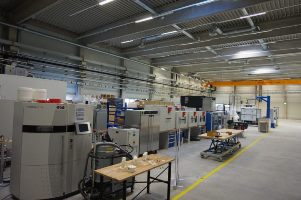› Forums › General › News (General) › Could predictive analytics help Tesla drop the cost of battery packs to $100 per kWh?
Tagged: AIAnalytics_H13, energy_O4
- This topic has 1 voice and 0 replies.
-
AuthorPosts
-
-
November 11, 2019 at 9:00 am #36367
#News(General) [ via IoTGroup ]
Headings…
Trending
Could predictive analytics help Tesla drop the cost of battery packs to $10
There is a quality challenge in battery cell manufacturing
How can we increase battery cell manufacturing yield?
Using Predictive Quality Analytics for battery cell manufacturing
In conclusionAuto extracted Text……
Here he explains how his team has boosted the battery cell production yield by 16% with Predictive Quality Analytics at eLab, the electromobility research centere in the University of Aachen in German
 y.
y.
To achieve this, the company must solve one of the world’s most demanding technology challenges – and it is how to increase the volumetric energy density of battery cells while slashing production costs.
To address Musk’s request for battery breakthrough innovations, this is how Elisa’s data scientists have increased battery cell production yield by predicting manufacturing quality.
There is a quality challenge in battery cell manufacturing
The manufacturing of Lithium-Ion battery cells for electric cars is, in principle, a straightforward process.
A primary challenge in the manufacturing of battery cells is that the final quality of the manufactured cells can only be verified after lengthy end-of-line testing – and completing the test can take up to three weeks.
It is only after this point when the manufacturer can determine if a final battery cell product can be used further, for battery pack production; or if it has to be scrapped as hazardous waste.
How can we increase battery cell manufacturing yield?
On the quest of developing a more efficient manufacturing process for battery cells, eLab partnered with Elisa Smart Factory’s data scientist team.
Using Predictive Quality Analytics for battery cell manufacturing
The overall situation was assessed, the quality drivers in the process were defined, the data points affecting the battery cell quality were identified, and the parameters, which best describe battery cell quality, were determined.
The data scientists must try out different algorithms to see the various outcomes they give when applied to the data collected from the battery cell manufacturing line.
It involved investigating if the results are valid and if they enable predicting the quality of the battery cells
Read More..
AutoTextExtraction by Working BoT using SmartNews 1.0299999999 Build 26 Aug 2019
-
-
AuthorPosts
- You must be logged in to reply to this topic.
